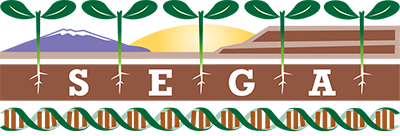You are here
Plant-herbivore interactions in a trispecific hybrid swarm of Populus: assessing support for hypotheses of hybrid bridges, evolutionary novelty and genetic similarity.
Publication Type:
Journal ArticleSource:
The New phytologist, Volume 209, Issue 2, p.832 - 44 (2016)ISBN:
0028-646XURL:
http://www.ncbi.nlm.nih.gov/sites/entrez?Db=pubmed&DbFrom=pubmed&Cmd=Link&LinkName=pubmed_pubmed&LinkReadableName=Related%20Articles&IdsFromResult=26346922&ordinalpos=3&itool=EntrezSystem2.PEntrez.Pubmed.Pubmed_ResultsPanel.Pubmed_RVDocSumhttp://www.ncbi.Keywords:
Alberta, Animals, Arthropods, biodiversity, Biological Evolution, Chimera, Ecosystem, Herbivory, Hybridization, Genetic, Populus, Trees, UtahAbstract:
<p>Natural systems of hybridizing plants are powerful tools with which to assess evolutionary processes between parental species and their associated arthropods. Here we report on these processes in a trispecific hybrid swarm of Populus trees. Using field observations, common garden experiments and genetic markers, we tested the hypothesis that genetic similarities among hosts underlie the distributions of 10 species of gall-forming arthropods and their ability to adapt to new host genotypes.the degree of genetic relatedness among parental species determines whether hybridization is primarily bidirectional or unidirectional; host genotype and genetic similarity strongly affect the distributions of gall-forming species, individually and as a community. These effects were detected observationally in the wild and experimentally in common gardens; correlations between the diversity of host genotypes and their associated arthropods identify hybrid zones as centres of biodiversity and potential species interactions with important ecological and evolutionary consequences. These findings support both hybrid bridge and evolutionary novelty hypotheses. However, the lack of parallel genetic studies on gall-forming arthropods limits our ability to define the host of origin with their subsequent shift to other host species or their evolution on hybrids as their final destination.</p>
- Log in to post comments
- Google Scholar
- RTF
- EndNote XML
- RIS
Theme by Danetsoft and Danang Probo Sayekti inspired by Maksimer
